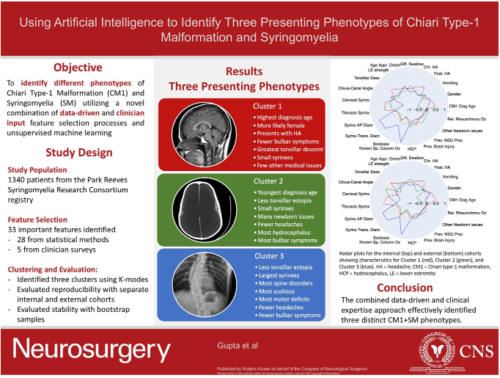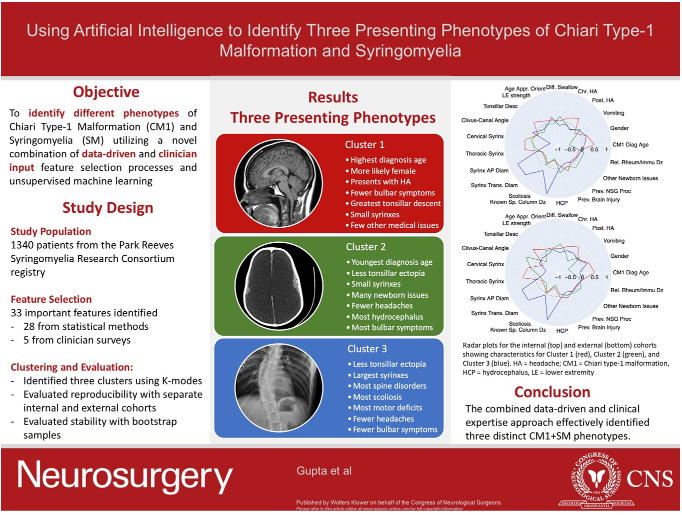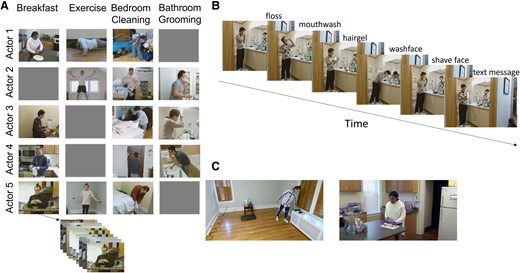2024-11-18 ワシントン大学セントルイス校
<関連情報>
- https://source.washu.edu/2024/11/researchers-define-new-subtypes-of-common-brain-disorder/
- https://journals.lww.com/neurosurgery/abstract/9900/using_artificial_intelligence_to_identify_three.1445.aspx
人工知能を用いてキアリ1型奇形と脊髄空洞症の3つの表現型を同定 Using Artificial Intelligence to Identify Three Presenting Phenotypes of Chiari Type-1 Malformation and Syringomyelia
Gupta, Vivek Prakash MD; Xu, Ziqi BS; Greenberg, Jacob K. MD, MSCI; Strahle, Jennifer Mae MD; Haller, Gabriel PhD; Meehan, Thanda RN, BSN; Roberts, Ashley BS; Limbrick, David D. Jr MD, PhD; Lu, Chenyang PhD
Neurosurgery Published:November 18, 2024
DOI:10.1227/neu.0000000000003249

Abstract
BACKGROUND AND OBJECTIVES:
Chiari type-1 malformation (CM1) and syringomyelia (SM) are common related pediatric neurosurgical conditions with heterogeneous clinical and radiological presentations that offer challenges related to diagnosis and management. Artificial intelligence (AI) techniques have been used in other fields of medicine to identify different phenotypic clusters that guide clinical care. In this study, we use a novel, combined data-driven and clinician input feature selection process and AI clustering to differentiate presenting phenotypes of CM1 + SM.
METHODS:
A total of 1340 patients with CM1 + SM in the Park Reeves Syringomyelia Research Consortium registry were split a priori into internal and external cohorts by site of enrollment. The internal cohort was used for feature selection and clustering. Features with high Laplacian scores were identified from preselected groups of clinically relevant variables. An expert clinician survey further identified features for inclusion that were not selected by the data-driven process.
RESULTS:
The feature selection process identified 33 features (28 from the data-driven process and 5 from the clinician survey) from an initial pool of 582 variables that were incorporated into the final model. A K-modes clustering algorithm was used to identify an optimum of 3 clusters in the internal cohort. An identical process was performed independently in the external cohort with similar results. Cluster 1 was defined by older CM1 diagnosis age, small syringes, lower tonsil position, more headaches, and fewer other comorbidities. Cluster 2 was defined by younger CM1 diagnosis age, more bulbar symptoms and hydrocephalus, small syringes, more congenital medical issues, and more previous neurosurgical procedures. Cluster 3 was defined by largest syringes, highest prevalence of spine deformity, fewer headaches, less tonsillar ectopia, and more motor deficits.
CONCLUSION:
This is the first study that uses an AI clustering algorithm combining a data-driven feature selection process with clinical expertise to identify different presenting phenotypes of CM1 + SM.



